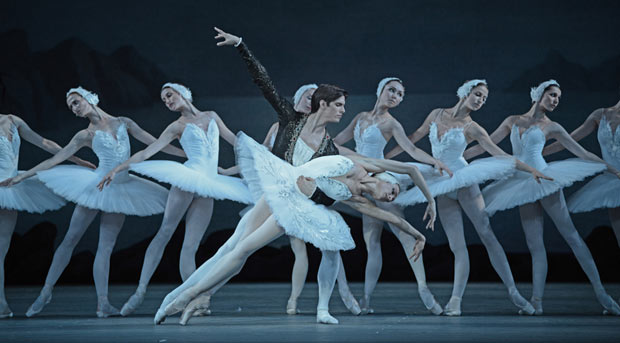
© Dave Morgan. (Click image for larger version)
Mariinsky Ballet
Swan Lake – Yulia Stepanova and Xander Parish
London, Royal Opera House
2 August 2014, matinee
www.mariinsky.ru/en
www.roh.org.uk
Gallery of pictures by Dave Morgan
In Konstantin Sergeyev’s 1950 production of Swan Lake for the (then) Kirov Ballet, Siegfried has no back story. He is purely and simply a ballet prince who knows how to comport himself: greeting his courtiers; standing around, waiting to claim centre stage; partnering his ballerina; accomplishing his virtuoso solo variations. Xander Parish, making his British debut at Saturday’s matinee, proved that he has been transformed into a true Mariinsky prince. His achievement is a reproach to the Royal Ballet, who failed to value him as a danseur noble.

© Dave Morgan. (Click image for larger version)
He stands proudly, one leg extended in a long line to a finely arched foot – a line that culminates in an elegant arabesque. He stalks through the ballroom celebrations in Act III, perturbed that he has to choose a bride from the would-be fiançées – a requirement his mother, the preening Princess Regent, has sprung on him (no warning mime in Act I). Performing the Black Swan pas de deux, he fulfils the promise Yuri Fateyev, deputy director of the Mariinsky, saw in him five years ago when he invited Parish to join the company.
Parish is now a well-finished dancer with a plush plié and springy leap bold enough to devour a large stage. He lands his double tours en l’air in an immaculately closed fifth position, brings off his multiple turns, flourishes his hands, Russian style, with brio. The only awkwardness is in his partnering of his Odette/Odile, Yulia Stepanova – and some of the fault is hers.
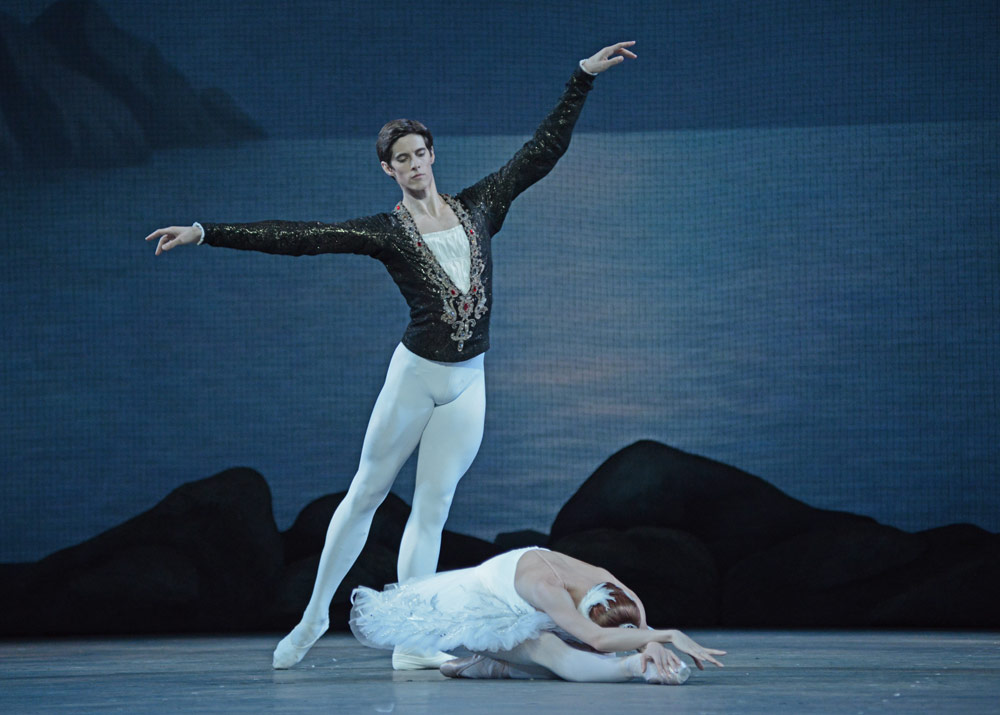
© Dave Morgan. (Click image for larger version)
The matinee was only the third time she and Parish have performed Swan Lake, after making their St Petersburg debuts earlier this year. Stepanova, who graduated from the Vaganova Academy in 2009, is still ranked as a coryphée; Parish is a second soloist. Their exposure in London has been an opportunity for them both to stake their claims as posssible principals. Stepanova is intriguing because she appears so confident, yet her placement on Saturday was unpredictable, as was her timing in supported poses and pirouettes. All too evidently, Parish had to get her back on balance, hands gripping her narrow waist.
As Odette, Stepanova seems a wild creature, relying plausibly on Parish’s Siegfried for support. On her own, against the backdrop of a silvery moonlit lake, swan-maidens lined up on either side, she is vulnerable, beautiful. Her arabesqe is unforced, her arms languid instead of strained into wing shapes. As Odile, she is unhinged, veering between menace and flirtation, more minx than femme fatale. Her musicality in Act II deserted her in the ballroom scene, leaving her phrasing disjointed, though she fitted in a fast set of fouettés, interspersed with doubles.
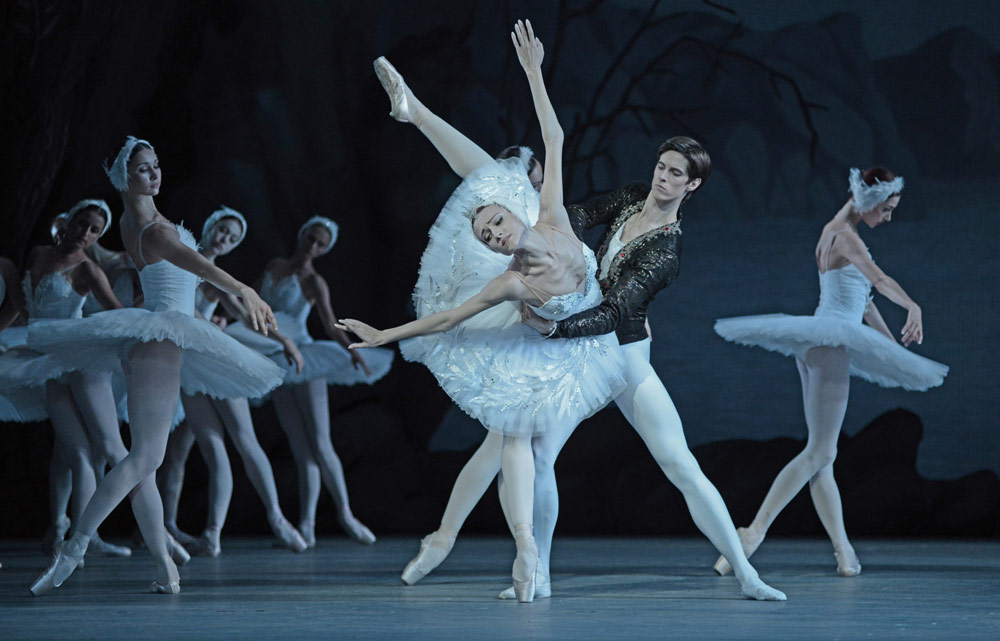
© Dave Morgan. (Click image for larger version)
In the last act, her Odette becomes a grieving woman, an almost dead weight for Siegfried to hold in his arms. Parish made the most of Siegfried’s soaring violin theme, a hero to the rescue, as he came in search of her among the flock of swans. All 36 of them do indeed resemble birds as they move in eerie unison, their slender limbs making identical shapes. With the lake lit pink behind them, they dazzle the eye like dancing flamingoes outlined against the water. At the matinée, the Mariinsky corps was impeccable. They are still, thank goodness, special, their schooling apparent in the way they change positions as if sighing on the same breath.

© Dave Morgan. (Click image for larger version)
In this production, Von Rothbart (Andrei Yermakov), remarkably discreet in Act II, comes into his own in Act IV as a high-flying raptor. In Act III, his disguise as a knight-extremely-errant makes him look as though he’s sponsored by Swarovski, as does the Princess Regent’s bling. What a relief to have Siegfried costumed in white for his coming-of-age ball, so that he’s clearly visible, unlike the Royal Ballet’s black-clad princes. This version has a happy ending, as the bad sorcerer expires and the loving couple rejoice, surrounded by grateful ex-swans in a final tableau. At the curtain call, it looked as though Von Rothbart’s corpse had been turned into a huge display of red roses in the centre of the stage – a tribute to the leading pair in their British debuts, successfully accomplished.








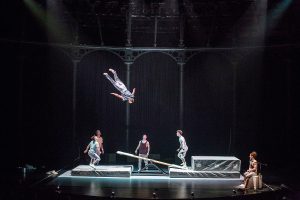

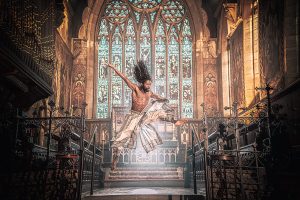

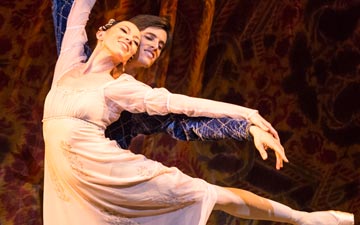

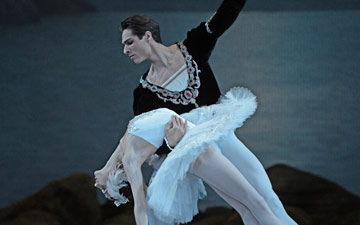
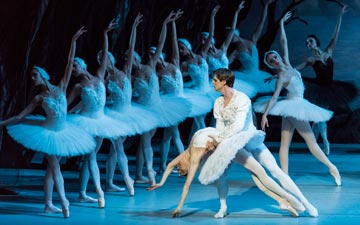

You must be logged in to post a comment.